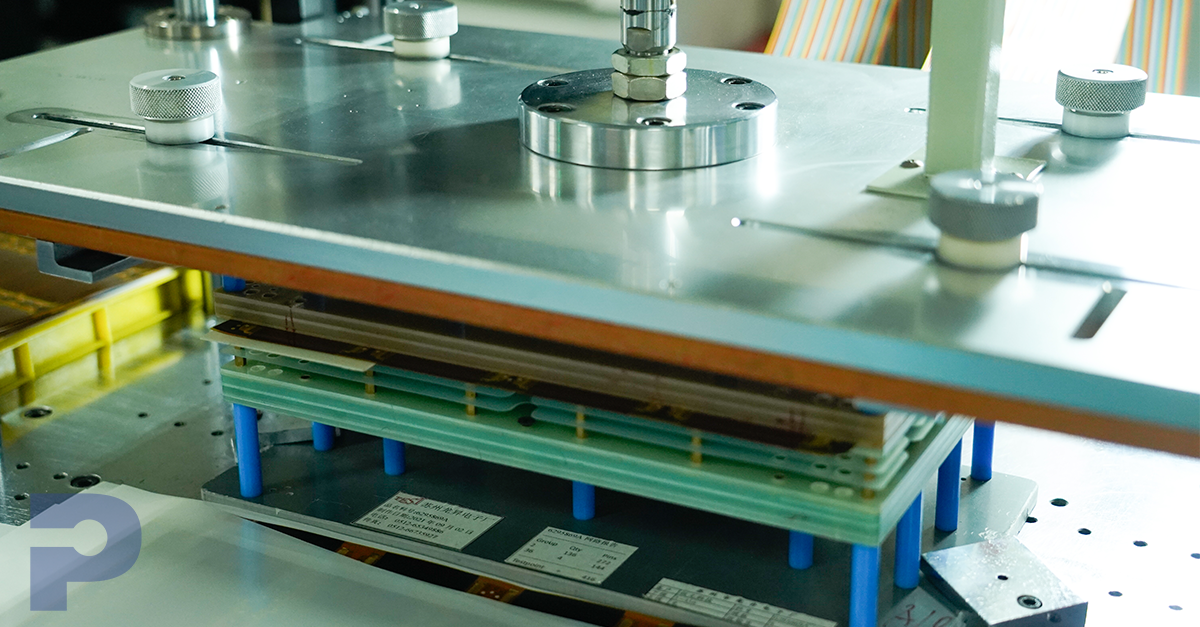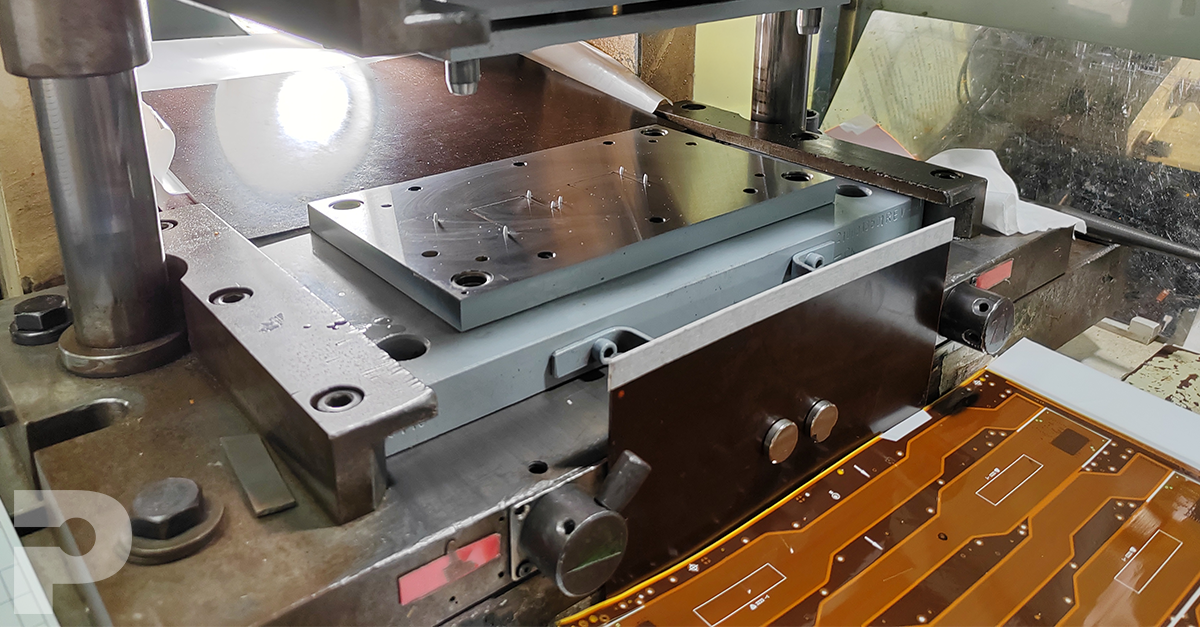
In Part 1 of this series, we discussed the essential role of mechanical tooling in Flexible Printed Circuit (FPC) manufacturing. Now, in Part 2, we will explore the use of fixtures, artwork films, CNC machining, vision punching, screen printing, and electrical testing to ensure precision and quality at every stage of production.
Fixtures for Applying Stiffeners and Coverlay
In addition to mechanical tools used to cut the outline and perform inside cuts for stiffeners and coverlays (discussed in Part 1), fixtures play an integral role in accurately applying these materials to flexible printed circuits.
- Stiffeners: Fixtures ensure the proper alignment and placement of stiffeners like Polyimide, Polyester, or FR4 on specific areas of the circuit to add rigidity. These fixtures hold the FPC and stiffeners in place during application to guarantee precise bonding and protection of sensitive parts of the circuit.
- Coverlay: Similarly, fixtures are used for the accurate application of coverlay materials, which act as dielectric protective layers. Proper application is critical to ensure environmental protection and insulation of the FPC surface.
Fixtures are crucial for maintaining consistency and accuracy, especially in high-volume production runs where manual application could lead to errors or misalignment. These tools streamline the process and improve overall product quality.
Vision Punching
Vision punching is a high-precision process used to ensure the accuracy of tooling holes and their alignment with the etched copper features of the FPC. Advanced software with optical recognition systems positions and punches holes at precise locations, ensuring consistency across prototypes and high-volume production.
Key Benefits:- Ensures accurate placement of holes for assembly, testing, and further processes.
- Critical for prototype development and large-scale production.
- Improves alignment precision, which is essential for complex FPC designs.
CNC Machining: Drilling, Routing, Lasering, and Precision Cutting Tables
CNC machining plays a vital role in producing high-quality FPCs with complex designs and exacting tolerances. Different CNC processes are employed depending on the required application:
- Drilling: Used for creating vias, plated through holes (PTH), tooling holes, and other critical features. Mechanical drilling guarantees the consistent and accurate placement of these holes.
- Routing: Routing software cuts stiffeners (such as FR4) and other rigid materials, helping form the final outline of the FPC and its components.
- Laser Cutting: Laser cutting is used to create high-precision features such as microvias and blind vias. This process offers exact cuts with fine tolerances, making it ideal for even the most intricate FPC designs.
- Precision Cutting Tables: These tables enable highly controlled, accurate cuts of FPC materials, ensuring that complex designs meet exact specifications. They are ideal for both prototype and small-to-medium volume production where precision is key.
Each of these CNC processes ensures that FPCs are produced with the highest levels of accuracy and quality, regardless of design complexity.
Read Part 1 of This Blog!
This blog is the second part of a two part series. Read the first section to learn about Mechanical Tooling: Soft vs. Hard Tooling.

Artwork Film
Artwork films are indispensable for the imaging processes involved in FPC manufacturing. They provide the precise imaging necessary for various production steps, including:
- Button Plating
- Etching
- Photoimageable Solder Masks
- Legend Printing
- Selective Plating (e.g., gold or organic solderability preservative (OSP))
Electrical Testing
Electrical testing is critical to ensuring that FPCs meet design specifications and function as intended. PICA Manufacturing Solutions employs two key testing technologies:
Bed-of-Nails Test Fixture: This traditional method uses a custom-built fixture with numerous pins ("nails") arranged to contact specific points on the FPC. While ideal for high-volume production due to its efficiency, it requires a custom fixture for each design, which can increase costs for low-volume runs.
Flying Probe System: A more advanced and flexible technology, the flying probe system uses digitally controlled probes to move across the FPC and test specific points without requiring a physical fixture. This system is highly adaptable, making it ideal for prototypes and small-batch production. The lack of a custom fixture reduces non-recurring engineering (NRE) costs and provides greater flexibility for complex designs.
Both methods ensure the functionality and reliability of FPCs before they are delivered to the customer.
Screen Printing
Screen printing is essential for applying solder masks and legends to FPCs. This process involves using specially designed screens, which are critical tools for accurately applying materials.
How it works: Fine mesh screens are stretched over a frame and coated with a photo-sensitive emulsion. UV light exposure creates a stencil based on the design, allowing only the necessary areas to be printed or coated. Materials are forced through the open sections of the screen using a squeegee, ensuring precision in applying solder masks or legends. Screen printing ensures that only the required parts of the FPC are coated, enhancing the overall quality of the circuit.
At PICA Manufacturing Solutions, we are committed to delivering high-quality FPC products to our customers. By employing the right fixtures, advanced artwork films, CNC machining, vision punching, screen printing, and comprehensive testing methods, we ensure that every project meets the highest standards of quality, precision, and efficiency, whether it’s for a small prototype or a large-scale production run.
This Part 2 completes the overview of tooling used in FPC manufacturing, emphasizing how fixtures and advanced technologies are employed to maintain accuracy, streamline processes, and deliver consistently high-quality products.